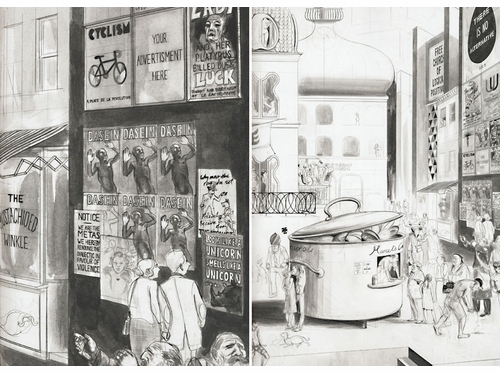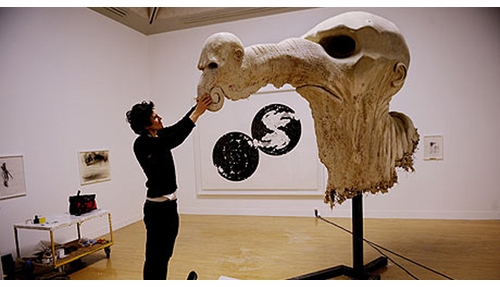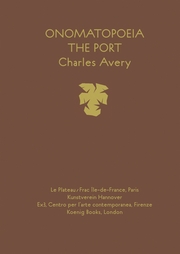| |||||||||||||||||||||||||
ARTBOOK BLOGEventsStore NewsMuseum Stores of the MonthNew Title ReleasesStaff PicksImage GalleryBooks in the MediaExcerpts & EssaysArtbook InterviewsEx LibrisAt First SightThe Artbook | D.A.P. 2025 Gift GuidesArtbook Featured Image ArchiveArtbook D.A.P. Events ArchiveDATE 12/11/2025 192 Books presents Raymond Foye and Peter Gizzi on The Song Cave's new edition of John Wiener’s 'Behind the State Capitol: Or Cincinnati Pike'DATE 12/8/2025 Pure winter glamour in ‘It’s Snowing!’DATE 12/3/2025 Flamboyant poses and melodramatic airs in 'Cecil Beaton's Fashionable World'DATE 11/30/2025 Artbook at Hauser & Wirth Los Angeles Bookstore presents Kelli Anderson and Claire L. Evans launching 'Alphabet in Motion'DATE 11/27/2025 Indigenous presence in 'Wendy Red Star: Her Dreams Are True'DATE 11/24/2025 Holiday Gift Guide 2025: Artful Crowd-PleasersDATE 11/22/2025 From 'Bottle Rocket' to 'The Phoenician Scheme' — the archives of Wes AndersonDATE 11/20/2025 The testimonial art of Reverend Joyce McDonaldDATE 11/18/2025 A profound document of art, love and friendship in ‘Paul Thek and Peter Hujar: Stay away from nothing’DATE 11/17/2025 The Strand presents Kelli Anderson + Giorgia Lupi launching 'Alphabet in Motion'DATE 11/15/2025 Holiday Gift Guide 2025: Stuff that StockingDATE 11/15/2025 Artbook at MoMA PS1 presents Cory Arcangel, Eivind Røssaak and Alexander R. Galloway launching 'The Cory Arcangel Hack'DATE 11/14/2025 Columbia GSAPP presents 'The Library is Open 23: Archigram Facsimile' with Beatriz Colomina Thomas Evans, Amelyn Ng, David Grahame Shane, Bernard Tschumi & Bart-Jan Polman | THOMAS EVANS | DATE 5/3/2011Charles Avery: Onomatopoeia (Walther König/Koenig Books, London, 2011)Of the many inspired curatorial concepts that Harald Szeemann devised in the course of his career, one of the most suggestive was “individual mythologies.” Szeemann debuted the term as the guiding thesis of the legendary Documenta 5, 1972; he later explicated it (in an interview with Hans Ulrich Obrist collected in the latter’s A Brief History of Curating) as “intense intentions that can take diverse shapes: people create their own sign systems, which take time to be deciphered.” Nebulously broad as this may sound, what Szeemann intended by “individual mythologies” was an art in which a unified system, or world view or cosmology manifests itself across a range of media—via a repertoire of signs and symbols, as in Marcel Broodthaers’ eagles, pipes and bricks, or Matt Mullican’s generic Isotype symbols; or through allegory, as in the cosmologies of William Blake, or Paul Thek, whom Szeemann included in the 1972 Individual Mythologies show. Such cosmologies would operate independently of existing religious, scientific and philosophical systems (though inevitably borrowing from them).The Island’s port is named Onomatopoeia, and this second volume in what Avery envisages as a multivolume encyclopedia on The Islanders gives a detailed rendering of what the local businesses and flyposter ads around the port of a philosophical allegory might look like:  “If the drawings are compelling, it is because of the sheer effort I got to and my earnest attempt to portray a place to the best of my abilities,” Avery told a recent interviewer. “It’s as though I have an intense conviction about how this place and its people look.” The Islanders differs from other artistic mythologies in which symbolism is often privileged over description, as Avery’s drawing skill takes the enterprise almost to the realm of the virtual in its illustrative zeal; perhaps it also helps obviate the hazard of author-centric solipsism particular to individual mythologies. With each new installment in the project, Avery throws open another vista onto a fresh corner or hinterland of his philosophical playground. |

